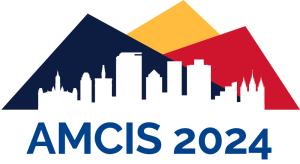Abstract
In the era of Web 3, the Metaverse stands out as a prominent business opportunity. The Metaverse is defined as “a (decentralized) three-dimensional online environment that is persistent and immersive, in which users represented by avatars can participate socially and economically with each other in a creative and collaborative manner in virtual spaces decoupled from the real physical world” (Ritterbusch & Teichmann, 2023, p. 12373). Accessed via virtual reality (VR) headsets, VR glasses, tactile-sensing gloves, and smartwatches, the Metaverse offers a fully immersive 3D space for various activities, from gaming and learning to working, shopping, socializing, and experiencing digital life (Wang et al., 2022). It has attracted attention across diverse sectors, including e-commerce, fashion, gaming, healthcare, advertising, and education (Dwivedi et al., 2022), highlighting a growing demand to convert traditional 2D applications into immersive 3D experiences. This transition is critical, serving as the bridge between our conventional digital experiences and the limitless potential of the Metaverse. Software designers, as the architects of this new digital world, their ability to adapt and excel in the Metaverse will determine the richness and inclusivity of this emerging digital frontier. Most software designers are well-versed in traditional 2D design tools and practices, which have long been the foundation for creating static images, websites, and user interfaces. However, these designers may encounter challenges as they transition to designing dynamic, immersive experiences required by the Metaverse. This study aims to help software designers navigate the transition to Metaverse space effectively by exploring the challenges they face when moving from 2D to 3D design in the Metaverse and identifying best practices and design principles to assist them. To achieve this, we conduct semi-structured interviews with 20 software designers experienced in VR and Metaverse design, employing qualitative thematic analysis to collect and analyze data. Preliminary results suggest that the Metaverse might not be appropriate for all applications. Therefore, developers must evaluate their target audience, app characteristics, and the potential benefits of incorporating a Metaverse component before the transition. In summary, this study helps software designers to reflect on design activities they apply in Metaverse and offers them best practices and design principles. This study contributes to the Metaverse design literature.
Paper Number
tpp1116
Recommended Citation
Li, Yafang; Mulgund, Pavankumar; Singh, Raghvendra; and Zheng, Yujie, "The Future of Software Design Work: Empowering Software Designers for a Seamless Transition from 2D to the Metaverse" (2024). AMCIS 2024 TREOs. 115.
https://aisel.aisnet.org/treos_amcis2024/115
When commenting on articles, please be friendly, welcoming, respectful and abide by the AIS eLibrary Discussion Thread Code of Conduct posted here.


